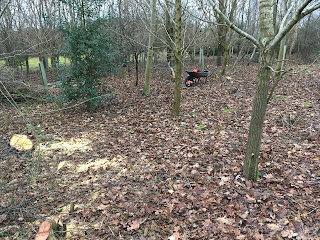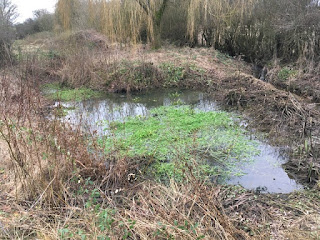Working in the woodland I am using different techniques for the different types of tree:
1) Leave to grow
The future high canopy trees such as Oak, Beech, and Ash are being left to grow, along with the slow growing trees such as Holly, Wayfaring tree, Crab Apple and Spindle.
2) Cut down
The Birch trees have sheltered the woodland as it has grown. They are now 30 to 40 feet high and the tallest trees in the wood, so cutting them down gives space and light for the others to grow. This also gives excellent and easily split firewood for next winter. The Birch stumps will not regrow.
3) Coppice
The hazel is being coppiced. Each trunk, or ‘stool’ is being cut at about 6 inches off the ground and will regrow with multiple shoots to give a mid canopy in the woodland.
4) Pollarding
The willow, which is nearly as tall as the birch, is being pollarded - cut off at about 4 feet from the ground (ideally it should be a couple of feet higher, but I am nervous of using a chainsaw at this height). Pollarding evolved to prevent cattle eating the new shoots, and although this is not an issue in the woodland I thought that a combination of coppicing and pollarding would create variety.
5) Bending over
To create the lowest canopy level I am ‘bending over’ the thorn trees. This is the same technique as used when laying a hedge. The upper branches are cut off, and the branches on the side which will be on the ground are also removed. The trunk is then cut through about two-thirds at the base and the whole thorn bush is then pushed to the ground. The trunk still needs to slope slightly upwards for the tree to survive. The thorn trees are about 20 feet high so battling with the spikes is my least favourite job!





















